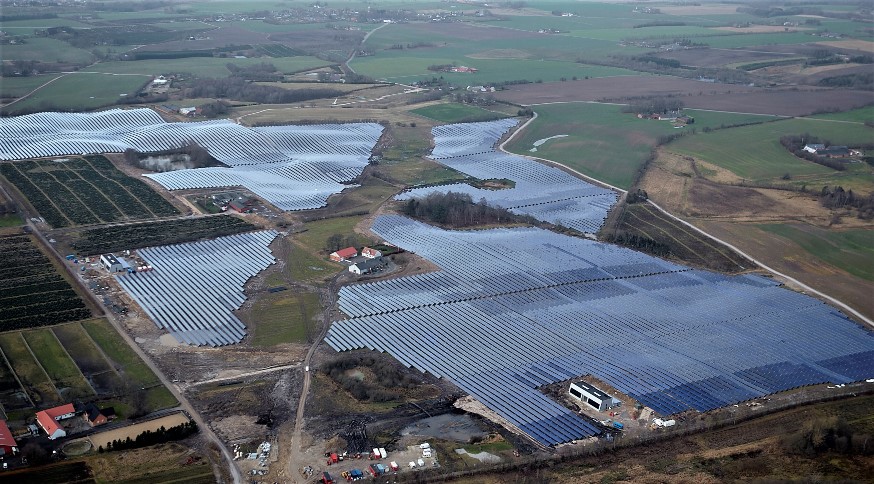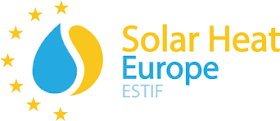The European Commission plans to launch its EU Solar Energy Strategy in June 2022. According to the official announcement this strategy will “take the form of a Commission communication“, aiming to ensure that solar energy both for power generation and heat production “achieves its full potential in helping to meet the European Green Deal’s climate & energy targets“. The Renewable Energy Directive envisages doubling the share of renewable energies to 40 % by 2030 and achieving climate neutrality by 2050.

Photo: Arcon Sunmark
These ambitious goals are only realistic if environmentally friendly and cost-effective solar energy technologies are optimally used by the EU member states. So that each country does not have to find its own way to do this, the EU Commission is drafting the EU Solar Energy Strategy as a common guideline and a tool to enable countries to “reap the benefits of an integrated energy system by identifying barriers to the use of solar energy, proposing measures to accelerate its deployment and making EU solar energy systems more competitive and resilient”. This will be achieved through demand-side and supply-side measures as well as high sustainability standards which further “maximise the socio-economic benefits, potential and value of solar energy for wider society”.
447 submissions during the public consultation
To obtain orientation for the elaboration of the strategy, the EU Commission asked EU citizens and companies, industry associations and institutions to provide their expertise via the Commission’s online public consultation. A total of 447 stakeholders took the chance to have their say from mid January until 12 April 2022. Solar Heat Europe, the European solar thermal industry federation, encouraged its members to take part in the consultation since the EU Solar Energy Strategy is “a key document for the years to come, as it will determine future solar energy policies“.
In his public consultation statement Solar Heat Europe Secretary General Pedro Dias appealed to the European Commission to ensure that “this strategy addresses in a balanced and fair way the three solar technologies: solar heating and cooling (solar thermal), solar photovoltaics (solar PV) and Concentrated Solar Power (CSP)”. According to him, solar thermal energy should play a prominent role in the EU-SES since its potential “has been underestimated, as has the entire renewable heat sector”. Heat represents half of the energy demand in Europe, pointed out Dias and added, “solar thermal is already in use in over 10 million households in Europe and is increasingly being integrated into industrial heat processes”.
Unbalanced emphasis on solar electricity
Solar heating is crucial for the energy transition, Dias argued, since it is “a competitive and reliable source of heat for European homes and companies, including the industrial sector”. Dias criticised the “unfair competition between solar PV and solar heat in the EU market”. For over a decade, politicians have focused more on promoting renewable power generation, for example PV, and this “unbalanced emphasis on the provision of solar electricity in relation to solar heat is observable in terms of policies, regulatory measures, financial support and public promotion”.
Secure heat supply from solar thermal
Similarly, Stefan Abrecht from Solar-Experience GmbH/Solar Heating Initiative urged that the solar strategy should consider PV and solar thermal energy as equal partners. He is convinced that the use of solar thermal energy could relieve the electricity grids and be “the basis for a secure heat supply, as solar thermal energy is more efficient for heating and cooling than other renewable energy technologies such as heat pumps or biomass”. Abrecht emphasised that solar thermal products, in contrast to photovoltaic systems, are “already predominantly manufactured in Europe and therefore offer additional advantages for the European market and greater independence from non-European countries”.

Quadrupling the installation rate of solar water heaters
Panagiotis Kenterlis of the Greek Solar Industry Association also complained that the potential of solar thermal energy has been underestimated. According to him, one third of Greek households already benefit from solar water heating today but the Greek solar thermal industry would be “ready to quadruple the installation rate of solar water heaters within two years. With a programme of immediate replacement of electric water heaters this goal could easily be achieved as 60% of water heating in Greece is still performed using electric heaters”. Kenterlis is convinced that the European Union “cannot afford to neglect the potential of a sector that has strong production capacities in Europe and needs support to increase demand”. Standardisation and certification, as well as cooperation agreements between the EU and non-EU countries should “play an important role in supporting European leadership in solar thermal”.

Implement solar obligations at national level
Robert Pinter from the European Copper Institute in Brussels proposes a solar roof programme. In his view, the European Commission should develop a framework programme in cooperation with EU member states, “to enable the large-scale and rapid deployment of solar energy: solar thermal and/or PV on European roofs. This framework programme should promote the adoption of solar obligations at national level, including the use of solar (thermal or PV) and green roof solutions in new buildings and major renovations, as well as the prioritisation of solar thermal for water heating. Such solar obligations should be complemented by supportive measures, e.g. to facilitate the process of approval, installation and decision-making within co-ownership associations”.
Once launched, the EU Solar Energy Strategy will not be alone for long. During Solar Heat Europe’s 30-year anniversary celebration in June 2022 the association intends to publish its own Solar Thermal Roadmap. “ It claims to replace 500 TWh of fossil fuels in Europe by 2030. This is the full solar capacity projected by the IEA and IRENA for 2050.





